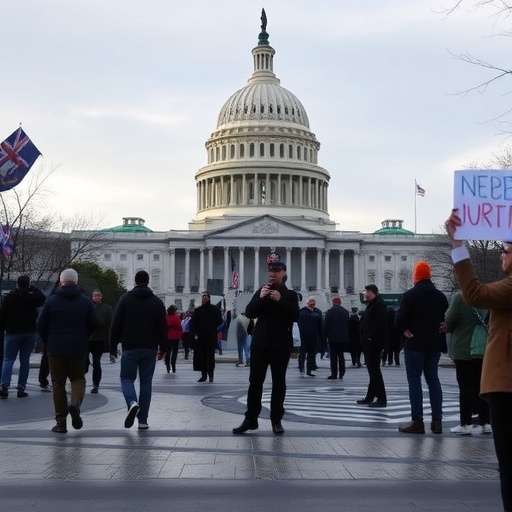Democrats Block Republican Funding Proposal, Triggering 11th U.S. Government Shutdown in Historic Budget Standoff
In a dramatic escalation of partisan tensions, Democrats in Congress have rejected a Republican funding proposal, plunging the United States into its 11th government shutdown. The move, which came late Friday evening, halts non-essential federal operations and affects millions of Americans, marking a significant chapter in the ongoing budget standoff between the two major parties.
The Republican-led proposal sought to extend current funding levels through November 21, avoiding immediate disruptions. However, Democrats, citing insufficient protections for key social programs, blocked the measure in a narrow Senate vote. This shutdown, the first since 2019, underscores deepening divides over spending priorities amid economic recovery efforts and upcoming midterm elections.
As federal agencies brace for closure, the implications ripple from furloughed workers to delayed services. With negotiations stalled, the question remains: how long will this budget standoff last?
Key Demands Fueling the Budget Standoff
The budget standoff reached a boiling point when Democrats refused to support the Republican funding proposal, demanding amendments that address what they call critical gaps in social safety nets. Senate Minority Leader Chuck Schumer (D-NY) articulated the party’s position in a floor speech, stating, “We cannot rubber-stamp a funding proposal that ignores the needs of working families. This is about more than politics—it’s about protecting vulnerable Americans from the fallout of inaction.”
At the heart of the dispute are disagreements over funding allocations for programs like Medicaid expansion and environmental initiatives. Republicans, led by House Speaker Mike Johnson (R-LA), argued that maintaining current levels would provide stability without adding to the national debt, which now exceeds $35 trillion. “Our funding proposal is a commonsense bridge to further talks,” Johnson said in a press conference. “Democrats’ rejection only prolongs uncertainty for the American people.”
This isn’t the first time such issues have derailed appropriations. Historical data from the Congressional Budget Office shows that budget standoffs have increased in frequency since 2010, with partisan gridlock cited as the primary cause in 80% of cases. The current impasse highlights broader ideological clashes: Republicans prioritize fiscal restraint and defense spending, while Democrats push for investments in healthcare and climate resilience.
Economists warn that prolonged delays could cost the economy up to $1.5 billion per week, based on analyses from previous shutdowns. Federal employees, numbering over 2 million, face immediate financial strain, with many relying on back pay promises that don’t cover lost wages during closures.
Historical Echoes: Lessons from Past Government Shutdowns
This government shutdown marks the 11th in U.S. history, a record that reflects the evolving nature of congressional dysfunction. The first notable shutdown occurred in 1976, but the modern era began with the 1995-1996 episodes under President Bill Clinton, which lasted 21 days and stemmed from disputes over welfare reform and spending cuts.
More recently, the 2018-2019 shutdown—the longest at 35 days—was triggered by immigration policy disagreements, costing an estimated $11 billion in economic activity. According to a 2020 Government Accountability Office report, these events have furloughed over 800,000 workers on average and disrupted services ranging from national parks to tax processing.
In the current scenario, parallels to 2013 are striking, when a budget standoff over the Affordable Care Act led to a 16-day closure. Then, as now, Republicans framed their funding proposal as a defense against perceived overreach, while Democrats accused them of using shutdown threats as leverage. Veteran Capitol Hill observer Norman Ornstein noted in an interview, “This 11th shutdown isn’t just history repeating—it’s a symptom of a polarized system where compromise is the casualty.”
Statistics underscore the pattern: The Bipartisan Policy Center reports that shutdowns have occurred in 10 of the last 20 fiscal years, with durations averaging 12 days. Each instance has amplified public frustration, with polls from Pew Research showing approval ratings for Congress dipping below 20% during crises. As this budget standoff unfolds, historians predict it could set a new precedent for how fiscal deadlines are weaponized in election cycles.
Immediate Fallout: Federal Workers and Services Hit Hard
The government shutdown’s immediate impacts are felt most acutely by federal workers and essential services. Over 1.9 million civilian employees across agencies like the Department of Defense, IRS, and National Institutes of Health are affected, with non-essential personnel furloughed without pay. Essential workers, such as air traffic controllers and border patrol agents, continue operations but without overtime compensation, leading to burnout risks.
In practical terms, this means closed Smithsonian museums, delayed Small Business Administration loans, and paused FDA inspections, potentially stalling drug approvals. Veterans Affairs hospitals remain open, but administrative backlogs could delay benefits for millions of veterans. A 2019 study by the American Action Forum estimated that similar shutdowns reduce GDP by 0.2% quarterly, with disproportionate effects on low-income households dependent on federal aid.
Personal stories highlight the human cost. In a statement, American Federation of Government Employees President Everett Kelley said, “These brave men and women serve the public daily, yet a budget standoff leaves them in limbo. Democrats and Republicans must prioritize people over politics.” Across the aisle, Republican Sen. Lindsey Graham (R-SC) acknowledged the strain, tweeting, “No one wins in a government shutdown—time for real talks on the funding proposal.”
Travelers and tourists are also impacted, with national parks like Yellowstone facing limited access and potential safety issues due to reduced staffing. The U.S. Travel Association warns of a $500 million loss in tourism revenue if the shutdown extends beyond a week, echoing losses from the 2013 closure.
Political Reactions and Bipartisan Backlash
Reactions to the Democrats’ block of the Republican funding proposal have been swift and polarized. President Joe Biden, in a White House address, criticized the move as “needless brinkmanship,” urging Congress to pass a clean continuing resolution. “This budget standoff endangers our recovery—Democrats and Republicans alike must step up,” he said.
On the Republican side, former President Donald Trump, a influential voice in GOP circles, blasted Democrats on social media: “Another shutdown because radical Dems won’t fund the wall or secure our borders. Voters will remember this in November.” Meanwhile, moderate Republicans like Sen. Susan Collins (R-ME) expressed frustration, calling for a bipartisan working group to resolve the impasse.
Public opinion, per a fresh Quinnipiac University poll, shows 62% of Americans blaming both parties equally for the government shutdown, with independents particularly disillusioned. Advocacy groups are mobilizing: The U.S. Chamber of Commerce warned of business disruptions, while progressive organizations like the Center for American Progress decried the lack of equity in funding debates.
Internationally, the shutdown draws scrutiny, with allies like the UK and EU monitoring U.S. fiscal stability. Financial markets dipped slightly Friday, with the Dow Jones falling 0.5%, as investors eye potential credit rating risks reminiscent of the 2011 debt ceiling crisis.
Pathways Forward: Negotiations and Potential Endgames
As the government shutdown enters its early days, eyes turn to possible resolutions in this entrenched budget standoff. House Republicans have scheduled emergency sessions to amend their funding proposal, potentially incorporating Democratic demands on disaster relief funding, which totals $50 billion in unmet needs from recent hurricanes.
Senate Majority Leader Schumer has floated a short-term extension through December 15, but only if paired with debt ceiling adjustments. Bipartisan talks, mediated by the Problem Solvers Caucus, could bridge gaps, drawing on successful 2021 negotiations that averted a shutdown over infrastructure.
Longer-term, experts like Maya MacGuineas of the Committee for a Responsible Federal Budget advocate for comprehensive budget reform, including automatic continuing resolutions to prevent future crises. If unresolved, the shutdown could extend into weeks, amplifying election-year pressures and possibly influencing voter turnout.
Stakeholders from Wall Street to Main Street are calling for urgency. Treasury Secretary Janet Yellen warned of payment delays if the standoff persists, affecting Social Security and Medicare disbursements. Ultimately, this 11th government shutdown tests the resilience of American democracy, with hopes pinned on compromise to restore operations and rebuild trust.










